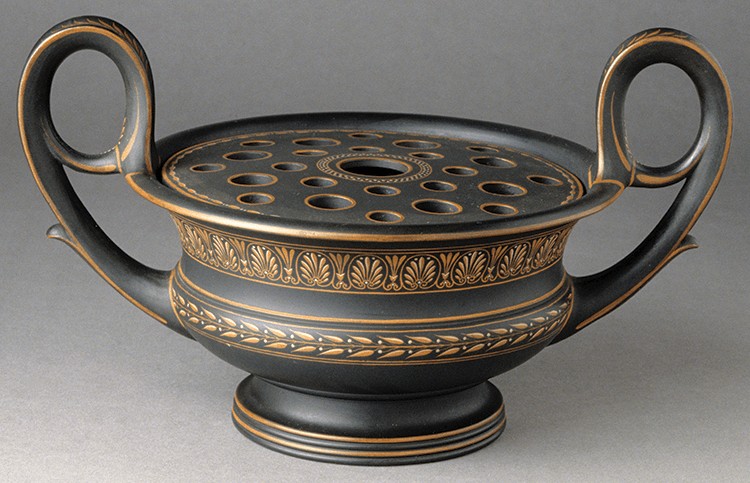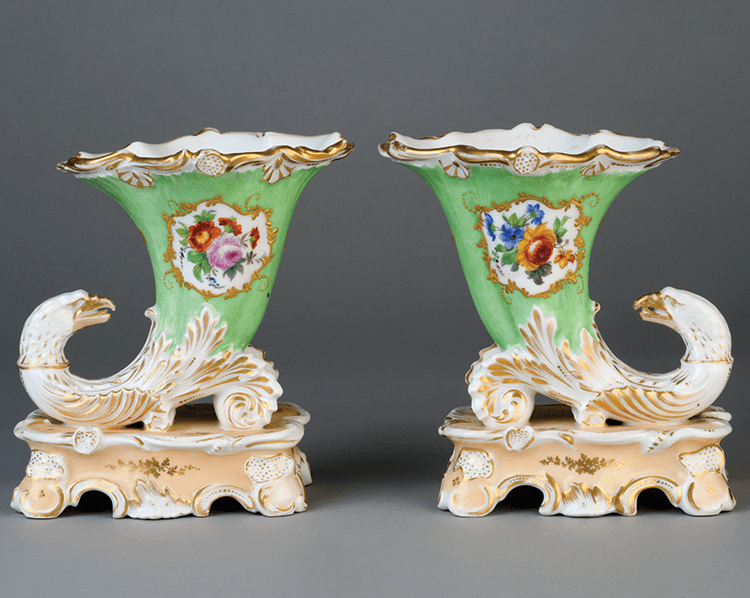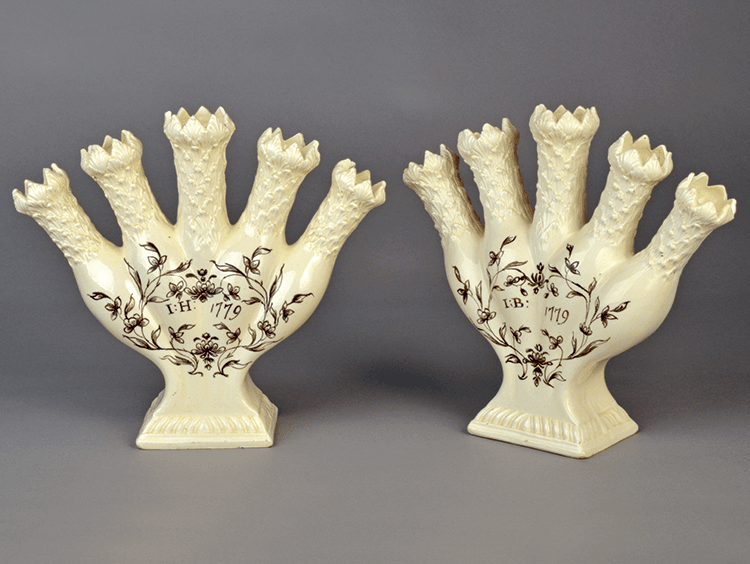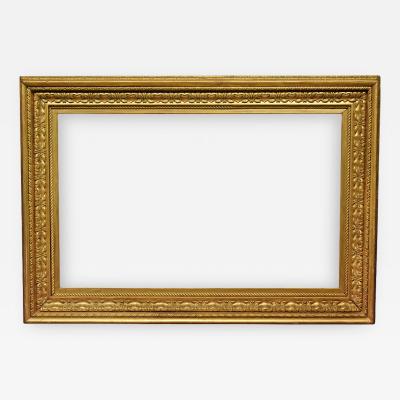Elegant Eighteenth-Century Flower Vases
Winterthur Primer
Among the most fascinating and varied types of ceramics produced throughout history are vase forms intended to display fresh, dried, or artificial flowers. Many forms and ornamental details have stood the test of time, while other, once-fashionable vase shapes have fallen into disuse and are now seen only in museums and private collections.
Some flower container shapes, rarely seen in use today, mimicked vessels originally not associated with flowers at all. Consider the many late-eighteenth- and nineteenth-century vases that reproduce ancient Greek and Roman wine-related receptacles. The beautiful Wedgwood basalt potpourri or bough pot in figure 1 imitates ancient Greek cantharos that were used as wine cups. Wedgwood’s encaustic-enameled vessel could be displayed as a purely ornamental object, or its solid inner lid could be removed and the pot filled with water. Small branches or floral sprays were held in place by the holes of the pierced lid. Alternatively, the bowl’s belly could be filled with potpourri, and its solid inner lid removed to free the scent when guests arrived. Over time, Wedgwood produced several variations on this type of vessel, and somewhat similar models were made in earthenware, stoneware, and porcelain at other English and Continental factories.
From the late 1700s through the mid 1800s, the rhyton, a type of footless wine cup originating in ancient Greece, was reinvented with the addition of a stabilizing foot as a popular vase type. Perhaps rhyton silhouettes, which resemble those of cornucopias associated with the flower deity Flora, made them naturals as flower holders? Rhyton-form vases (Fig. 2) were produced in ceramics, glass, bronze, and other materials. Typically, they were made in mirror-image pairs to display against walls, on mantelpieces, or elsewhere.
In the eighteenth and nineteenth centuries, so-called wall pockets portraying Flora (Figs. 3, 4) were sometimes known as “cornucopias” or “flower horns.” Though period illustrations portraying wall pockets in use are quite rare, plate 18 of Robert Sayer’s The Ladies Amusement, Or, Whole Art of Japanning Made Easy (London, circa 1762), portrays a twisted, flower-filled cornucopia-shaped pocket. Evidence for wall pockets in Colonial America includes a 1762 New-York Gazette advertisement by merchants Keeling and Morris, offering for sale “Venis [perhaps a misidentification of Flora?] Flower Faces both green and white.”1 Perhaps the firm’s “Flower Faces” resembled the creamware wall pocket (lacking its lower tip) at left in figure 4. More than a century later, a somewhat similar vase may have inspired Daniel Peter Shenfelder of Reading, Pennsylvania, when he created wall pockets for flower-crazed Americans (Fig. 4, right).
Multi-nozzled, circular-section flower containers are known from the Near East as early as 2500 BC,2 but the flattened types referred to in England as “quintals,” “quintal flower horns,” or “five fingered flower pots,” 3 derived from late-seventeenth-century tin-glazed earthenware (Delftware) vases from the Netherlands. Fashionable Dutch examples from the Greek A Factory were excavated at Het Loo Palace in Apeldoorn, Netherlands.4 Unusually, the English creamware pair in figure 5 bears inscriptions. Both vases are dated 1779; one is initialed “I:H” and the other, “I:B.” The long-term, widespread popularity of quintals is hinted at in late-eighteenth- and early nineteenth-century illustrated English catalogues, some of which were published in other languages. Well into the 1800s, quintals were made in English pearlware, lusterware, and other ceramics for both domestic and foreign markets. Some would inspire American ceramic models, as did several other English vase forms.
The vases discussed here by no means cover the full variety once enjoyed by British, Continental European, and American markets. Such vessels were produced in materials suited to different economic stratas and in styles appealing to many different tastes. Perhaps one day, modern ceramics makers will rejuvenate rhyton vases, quintals, and the like, and new iterations of these objects, now so admired by collectors, will make their way back into a flower-filled world.
Leslie B. Grigsby is senior curator of ceramics and glass, Winterthur Museum, Garden & Library, Winterthur, Delaware.
"Let's Vase It" is part of the "Winterthur Primer" series published in each issue of Antiques & FIne Art magazine. More Winterthur Primer articles are available by searching Incollect or can be found in one location at Winterthur.org.
This article was originally published in the Autumn 2015 issue of Antiques & Fine Art magazine, a digitized version of which is available on afamag.com. Antiques & Fine Art, AFAmag, AFAnews, and AFA Publishing are affiliated with InCollect.com.
2. Julia S. Berrall, A History of Flower Arrangement (New York: Viking Press, 1968), 11, fig. 1.
3. Peter Walton, Creamware and Other English Pottery at Temple Newsam House, Leeds (Bradford, England: Manningham Press, 1976), no. 550.
4. M. van Aken-Fehmers, Vases with Spouts. Three Centuries of Splendour: Dutch Delftware — History of a National Product (Zwolle: Waanders Uitgevers, 2007), 124, 2.01.




































